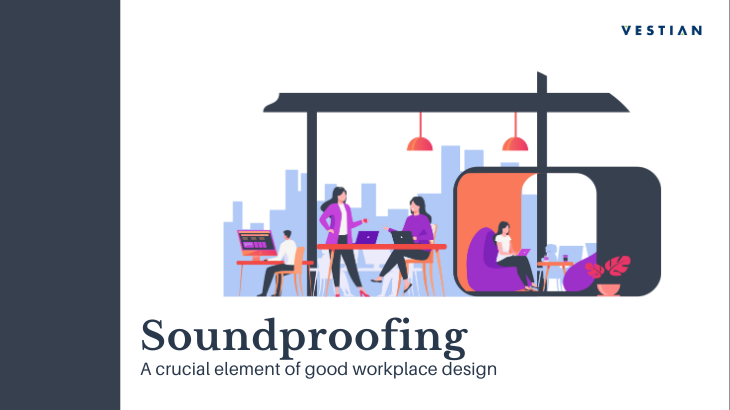A well designed, employee centric workplace is incomplete without the right acoustics. Sounds drastic, doesn’t it? Overdramatic? Not really. Our immediate environment has a huge impact on us and our health and wellbeing. With so much importance being accorded to employee health and wellbeing, it is time that we shine the light on the sound stressors at work; and accordingly plan to combat/ minimise it at the workplace.
Did you know that not all sound is noise – noise is unwanted or unpleasant sound and can cause stress and interfere with concentration, induce hearing loss, lead to high blood pressure and sleep disorders, change in speech and communication pattern, that is apart from impacting one’s co-ordination and concentration. It can lead to stress which contributes to health problems of the heart, stomach (ulcers) and the central nervous system (CNS) and lead to a situation where one is constantly fatigued.
This issue has been further exacerbated after two years of lockdowns and remote working, with many employees finding it harder to concentrate in open offices. People have become hypersensitive to their environments.
Thus it is no wonder that today, USA and many countries in Europe have rolled out noise control act/ policies that promote an environment free from noise, that jeopardizes health and welfare of the people.
While acoustics is one of the biggest challenges in current workspaces and “Pink noise” is becoming an increasingly popular option to mask the background noise; we are also seeing an increase in quiet rooms, both flexible as well as dedicated areas with interior offices, meeting rooms, phone rooms, huddle spaces, or private offices that are either shared or unassigned. There is also a growing demand for tech free zones at the workspace, like library spaces where one can deeply focus. Having said that, these are nowhere near the only options available to make the workspace conducive for employees.
Integrating soundproofing while building a workspace should be one of the key elements to building a good office space.
So, what are the options, and how do you go about it?
The first step is to start at the drawing board and involves planning. Conduct an audit of the space to understand how noise penetrates the building. Minimizing sound is all about understanding the source of the noise, assessing it and figuring out as to where the sound waves travel, then bounce off or get absorbed.
Some of the options available to address the acoustics at the workplace, apart from basic carpeting and acoustic panels, include creating floor to ceiling walls, sealed door frames that prevent sound leakage, doors and windows with acoustic membrane, fiberglass, resilient channels, creating acoustic mineral wool cavity which consists of mineral, rock or stone wool insulation which effectively absorb acoustic and thermal energies.
Of course, it makes sense if these are incorporated at the conceptualization or even implementation stage, but that is not to say that it cannot be later added, especially in the case of older buildings that need refurbishment to align to the current sustainability requirements.
It is advisable to hire a professional real estate workplace consultant for solutions that can be implemented to the existing building seamlessly. A professional consultant will provide creative/new ideas on how the dynamics of the existing space can be changed with the introduction of new materials, technologies, techniques, and structures.
At Vestian we help build and create the most conducive atmosphere for your employees to thrive in. Our SMEs, design experts and workplace consultants have assisted many companies keep up with the changing dynamics of the workplace and build smart offices that work best for your requirements. If you are looking at building or upgrading your office or building, reach us at info@vestian.in

